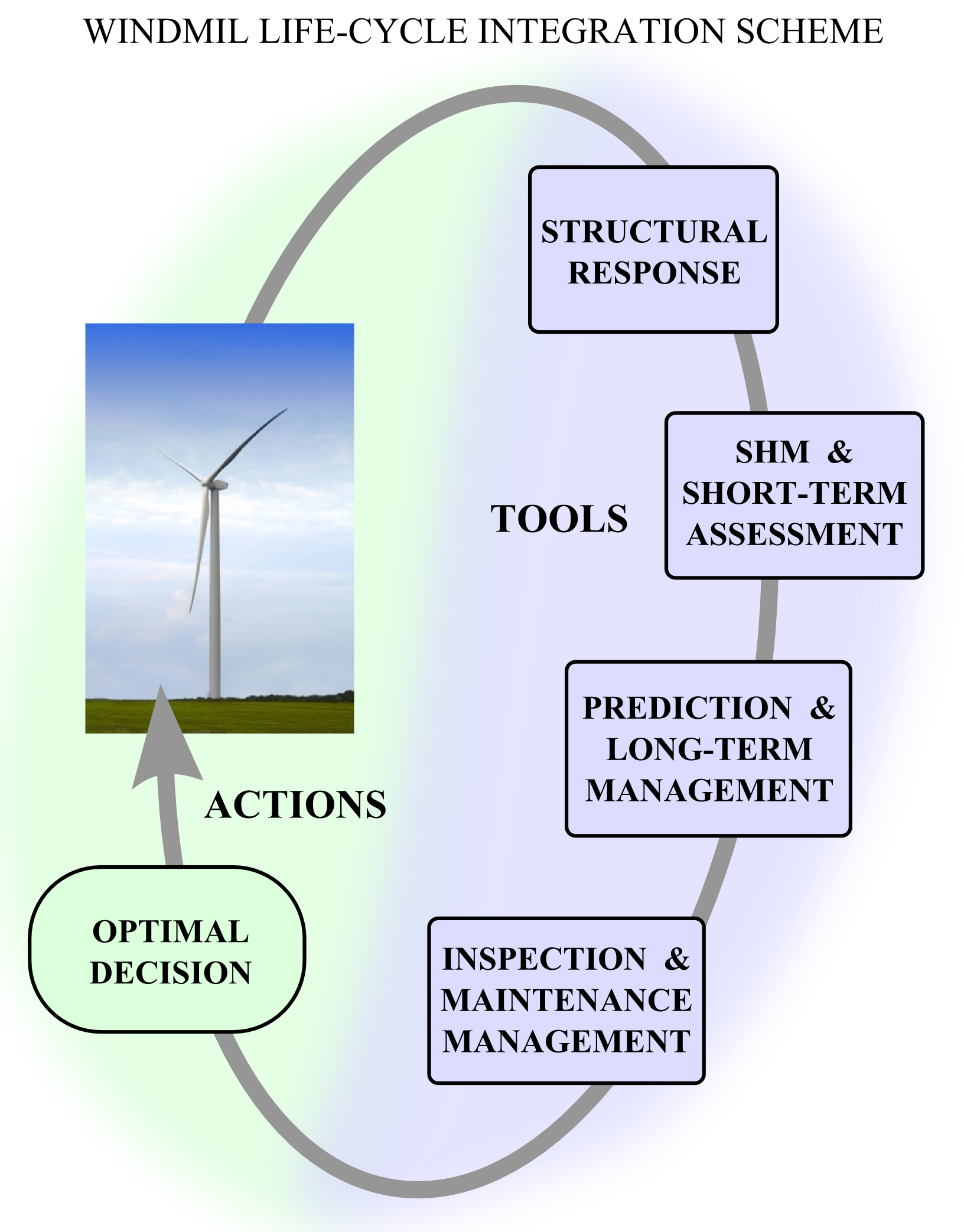WINDMIL - Smart Monitoring, Inspection and Life-Cycle Assessment of Wind Turbines
ERC Starting Grant project WINDMIL aims to establish a smart framework for life-cycle assessment of Wind Turbines (WTs), guiding the management of these assets from cradle-to-grave. The project couples easily deployed and affordable sensor technology with state-of-the-art numerical modeling and data processing tools for diagnosing condition and predicting residual life.
The excessive energy consumption that Europe is faced with, calls for sustainable resource management and policymaking. Amongst renewable sources of the global energy pool, wind energy holds the lead. Nonetheless, wind turbine (WT) facilities are conjoined with a number of shortcomings relating to their short life-span and the lack of efficient management schemes. With a number of WTs currently reaching their design span, stakeholders and policy makers are convinced of the necessity for reliable life-cycle assessment methodologies. This proposal aims to establish a smart framework for the monitoring, inspection and life-cycle assessment of WTs, able to guide WT operators in the management of these assets from cradle-to-grave. This project is founded on a minimal intervention principle, coupling easily deployed and affordable sensor technology with state-of-the-art numerical modeling and data processing tools. An integrated approach is proposed comprising: (i) a new monitoring paradigm for WTs relying on fusion of structural response information, (ii) simulation of influential, yet little explored, factors affecting structural response, such as structure-foundation-soil interaction and fatigue (ii) a stochastic framework for detecting anomalies in both a short- (damage) and long-term (deterioration) scale.

The ESC Member involved in this project is Professor Eleni Chatzi, Head of Group of Structural Mechanics.
Providing a solution to the challenging problem is a twofold task for the group, involving on one hand efficient designs for new structures, and on the other hand the planning of appropriate maintenance and repair schemes for existing ones. Monitoring of infrastructure systems, also referred to as Structural Health Monitoring, can be a valuable source of information for evaluating structural integrity, durability and reliability throughout the structure life cycle as well as ensuring optimal maintenance planning and safe operation.
